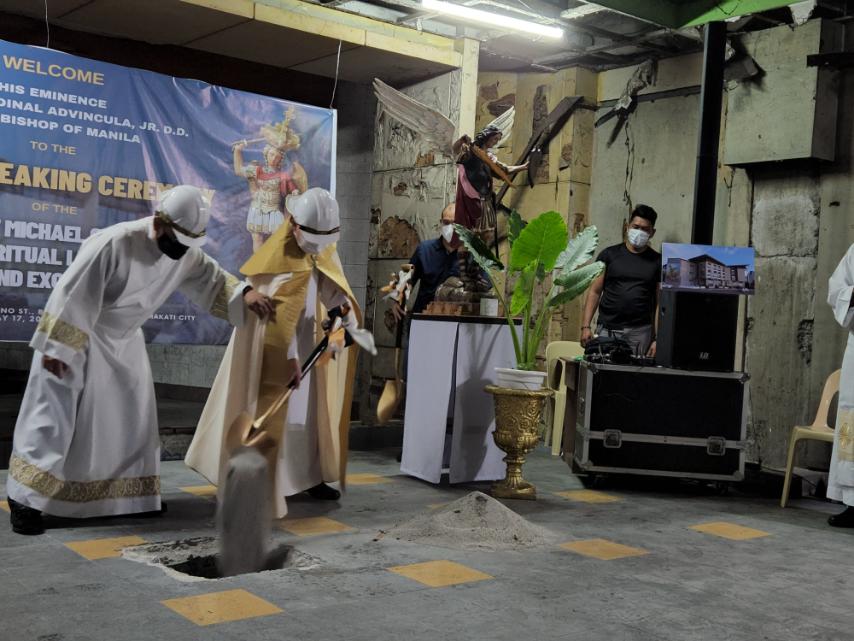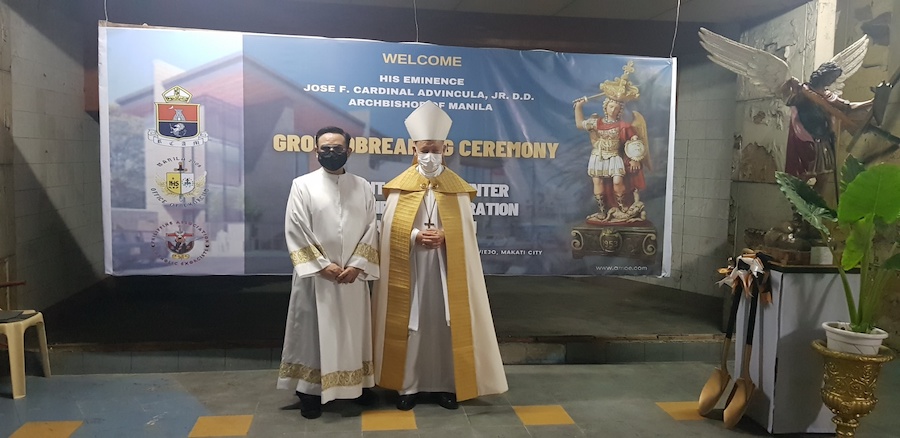Post-pandemic, exorcism for the Catholic Church becomes the new normal due to an increase in cases
With the recent cornerstone-laying ceremonies of a planned three-story “exorcism center” led by Manila Archbishop Jose Cardinal Advincula, exorcism, the Catholic ritual that’s supposed to drive away the devil from allegedly possessed people, promises to become the norm in the post-pandemic “new normal.”
At the height of the pandemic and amid the severe lockdown in 2020, priests from the Manila archdiocese performed regular exorcisms to drive away the evil of COVID-19. The ceremonies were streamed on social media for viewing by the faithful.
Dominican Fr. Winston Cabading, a member of the exorcism office of the Manila archdiocese and a former secretary-general of the University of Santo Tomas, wrote the prayer for the exorcism ritual, which was performed at 8 p.m. every day “until the scourge of the pandemic is lifted by the Lord.”
The prayer was said across dioceses nationwide by exorcists of the Philippine Association of Catholic Exorcists (PACE).
Sickness and epidemics are seen in Catholic theology as manifestations of the “Evil One,” but the common knowledge about exorcism is that it is performed to liberate a person from demonic possession.
The Catechism of the Catholic Church classifies exorcism as among “sacramentals”—“sacred signs which bear a resemblance to sacraments … (that) signify effects, particularly of a spiritual nature, which are obtained through the intercession of the Church.”
Only especially accredited priests are authorized by bishops to perform exorcisms.
“When the Church asks publicly and authoritatively in the name of Jesus Christ that a person or object be protected against the power of the Evil One and withdrawn from his dominion, it is called exorcism,” the Catechism says.
With Cardinal Advincula during the cornerstone-laying ceremonies last May 17 was Fr. Jose Francisco “Jocis” Syquia, chief exorcist of the Archdiocese of Manila Office of Exorcism (AMOE).
The patients suffered from inexplicable psychological disorders, some of them suicidal. In some cases, extraordinary phenomena such as levitation were seen.
The building will be known as the Saint Michael Center for Spiritual Liberation and Exorcism. St Michael the Archangel is invoked in the Catholic Church because among his “offices” or duties are to fight Satan and rescue the souls of the faithful from “the power of the enemy,” especially at the hour of death.
The AMOE said the project took seven years of “prayers, planning and fundraising” and “will be the first of its kind in Asia, if not the world.”
Aside from AMOE, the St Michael’s Center will also house the archdiocese’s Commission on Extraordinary Phenomena, and Ministry on Visions and Phenomena Office.
It will also serve as the headquarters of PACE, which is under the Episcopal Commissions on the Doctrine of the Faith and on Liturgy of the Catholic Bishops Conference of the Philippines.
Even before the pandemic, there had been a campaign to raise money for the establishment of the St. Michael’s Center.
“Spiritual liberation and exorcism falls under the Ministry of the Sick,” said Fr. Syquia. “This entails a program that encompasses not only diagnostic procedures and the prayer for spiritual liberation and exorcism itself, but must also include proper follow-ups and evaluations.”
Even before the pandemic, Fathers Syquia and Cabading had been performing exorcisms, with patients endorsed by bishops of other dioceses.
The patients suffered from inexplicable psychological disorders, some of them suicidal. In some cases, extraordinary phenomena such as levitation were seen.
Fr. Syquia has written about his exorcism cases in a best-selling series of books published and distributed by St. Pauls.
Meanwhile Fr. Cabading’s exploits are documented for the popular audience in Patron Comics, a Catholic comic book series merging exorcism, pro-life, and teen superhero genres published by Regina Caeli Publishing.
The cases increased during the pandemic because the lockdown weighed down on the mental health of people.
Both priests are trained in high theology.
Fr. Syquia finished his theological studies at UST in Manila and Angelicum in Rome. He took up a course on exorcism ministry and (spiritual) liberation prayer of the Regina Apostolorum pontifical institution in Rome. He also has a Master’s in Psychology from UST.
Fr. Cabading finished his zoology and theology degrees at UST and read patristics, or the works of the early Christian theologians, at the Instituto di Teologia Ecumenico-Patristica Greco-Bizantina San Nicola in Bari, Italy and Sheptytsky Institute of Eastern Christian Studies in Toronto, Canada.
(Facebook video shows Dominican Fr. Winston Cabading of the Archdiocese of Manila Office of Exorcism performing an exorcism ritual in March 2020.)
The cases increased during the pandemic because the lockdown weighed down on the mental health of people, said experts.
The St. Michael’s Center is planned to be a holistic center for psychological health and spiritual healing. According to the architectural plan, it will have “interview / counseling rooms, conference rooms, training halls, a library, holding rooms for guest (exorcist) priests,” and a chapel dedicated to Our Lady of Angels.
“The whole thrust of this ministry is to guide the afflicted person or energumen to grow in holiness by bringing him to an intimate relationship with Jesus,” said Fr. Syquia. “This may necessitate exorcism prayers, guidance and counseling, evangelization of the person and his family, introduction to a community where the energumen can find support and regular evaluation of progress in both his spiritual life and liberation.”




